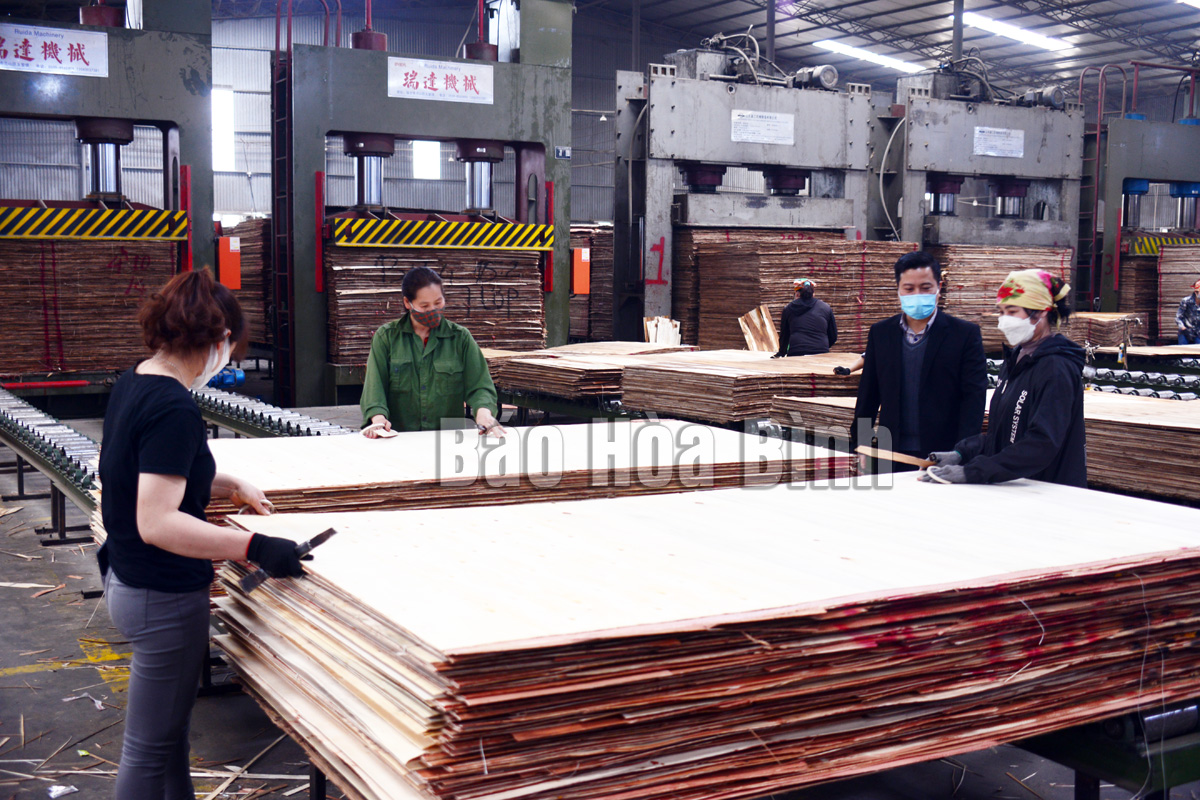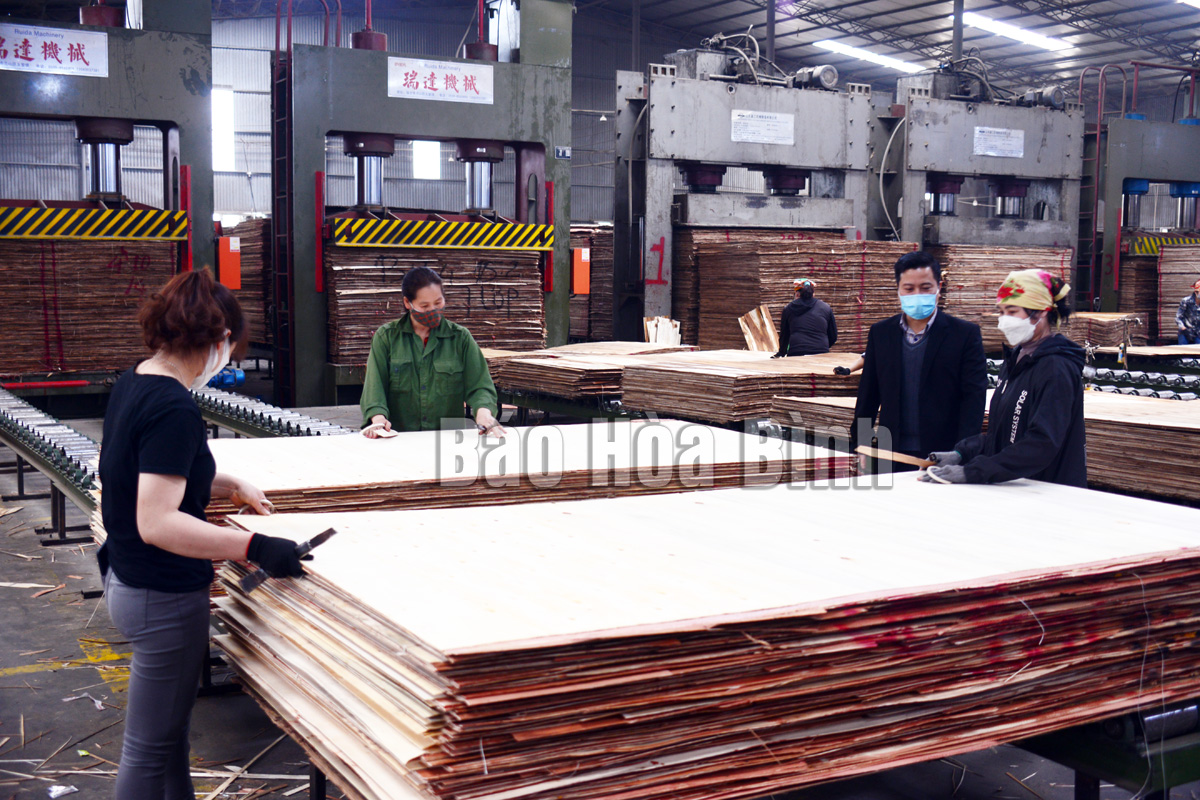



Over recent time, the province has focused on developing infrastructure and preparing a clean land fund to attract investment in industrial development. In the photo: Hai Hien Wood Processing Company operates effectively at Mong Hoa Industrial Park.
Hoa Binh province has set a target that, by 2025, industry and construction will account for 54 percent of its economic structure, while occupancy rates at industrial parks (IPs) will be over 80 percent and the land area of IPs and industrial clusters will account for about 1 percent of the province’s natural land area.
To realise this goal, Hoa Binh is focusing on infrastructure development and preparing a clean land fund to attract investment in industrial development.
According to the industrial development plan, the province has eight IPs on a total area of 1,507.43 ha. Four of the eight IPs, including Luong Son, Yen Quang, and Nhuan Trach IPs, have infrastructure investors.
However, the province is facing many difficulties in site clearance for industrial infrastructure.
On average, each year, the province clears 32.2 hectares of land in IPs, which falls short of demand for clean land to attract investment.
Site clearance is slow due to changes in local regulations on compensation, support, and resettlement, with a long time also needed for completing procedures.
The province will focus this year on mobilising resources, continuing to invest in and develop infrastructure at IPs and industrial clusters.
It will also speed up site clearance at Yen Quang, Mong Hoa, Lac Thinh, and Nhuan Trach IPs.
More effort will be made to strengthen coordination and support investors in completing infrastructure at already-capitalised and operating IPs, overcome delays in site clearance to promote investment attraction, and focus on attracting capable secondary investors.
Land management will be tightened immediately after an IP is approved or adjusted, in order to quickly identify, prevent, and strictly handle any illegal exploitation and use of land resources.
Projects using land for improper purposes will be strictly dealt with, as will those not putting or being slow in putting land into use under investment decisions. Regular inspections will be made to promptly detect and handle violations in site compensation and resettlement support./.